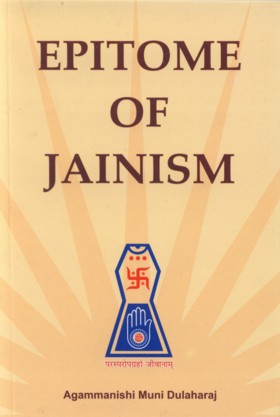According to Jain philosophy, unity and diversity both are real. Both are co-related. Unity without diversity and diversity without unity is unreal.
Each and every object in this world has infinite properties. They have relative significance. All these properties can be comprehended only with reference to context. No property, whatsoever, can be delineated absolutely.
The whole truth about a particular object can be comprehended, but it cannot be communicated. At a time, we can only describe one of the properties of a substance. As such this utterance is only justified in relation to other properties. It is wrong to assert a thing with certainty, because every utterance of ours is from a particular point of view. If this point of view is neglected, we cannot come to the truth. With a certain standpoint, we can comprehend only one aspect of a thing, and not all the infinite aspects, which each and every object has by nature. Let us take an example of a person. He is a writer, orator, poet, professor, and so on. All these qualities abide in one and the same person. But they are all relative truths. When we say that he is a writer, we comprehend his writing capacity (and) designate him as a prolific writer. But when we say that he is a poet, his writing capacity is not comprehended, but his poetic talent is taken into consideration. Likewise all the qualities of a person, when expressed in words, are relative expressions.
A person is father to his son, son to his father. He is brother to his sister and nephew to his uncle. He is a pupil to his teacher and teacher to his pupils. He is of multitude relations and qualities. But they all depend upon different viewpoints.
Truth is infinite. It can only be approached through infinite standpoints. Theoretically, this theory has helped a lot in coming to the conclusion of truth of certain substances. Jain thinkers adhered to this theory, which is technically called ‘Syadvada’, in expressing their attitude towards the fundamental realties of the world.
Lord Mahavira said, ‘Comprehend all the aspects of an element with different viewpoints. Truth is relative; it cannot be comprehended absolutely. One who desires to comprehend one aspect of an element by neglecting all the other infinite aspects of it, can never know that particular aspect in reality. Such comprehension will only be a half way to truth.
All our day-to-day activities abide by this law of nature. Nobody can transgress its boundary and claim to be a votary of truth. This relatedness of view-points has paved way for co-existence and reconciliation of all contradictory attributes. It has created an atmosphere of tolerance, and therefore obstinacy is automatically eradicated. Lord Mahavira said, ‘Do not distort the thought of others. Try to understand them in their due perspective. No utterance is untrue when it is considered in the context in which it is uttered. This will lead to light. Tug-of-war between divergent views will come to an end and the way to reconciliation will be enlightened.’
The poisonous bite of a serpent never disturbed the poise and tranquillity of Lord Mahavira, nor the praise of millions generated arrogance or self-pride in him. He thought, ‘This serpent is groping in darkness. He is ignorant of true virtues of life. His ignorance has led him to do evil to others. I am enlightened. I should not foster ill-will against the evil-doer.’ Thus he was pacified.
It is certain that this theory of ‘Anekantavada’ or ‘Syadavada’ has its application in day to day life. Had it been only a theory of philosophical importance, it would have lost its practical utility. The principles, which are not applicable in our day-to-day life, have no significance whatsoever.
In brief ‘Syadavada’ is the method of understanding another’s views, in their correct perspectives. This, at its initial stage, rids one of misconceptions and thus the flood-gates of truth become ajar.
This attitude of understanding another man’s views paves way for tolerance and thus overt or covert sniping and topplings are stopped for ever. This ultimately by leads to the reconciliation of opposite views and creates an atmosphere of harmony and peace.
 Agammanishi Muni Dulheraj
Agammanishi Muni Dulheraj
